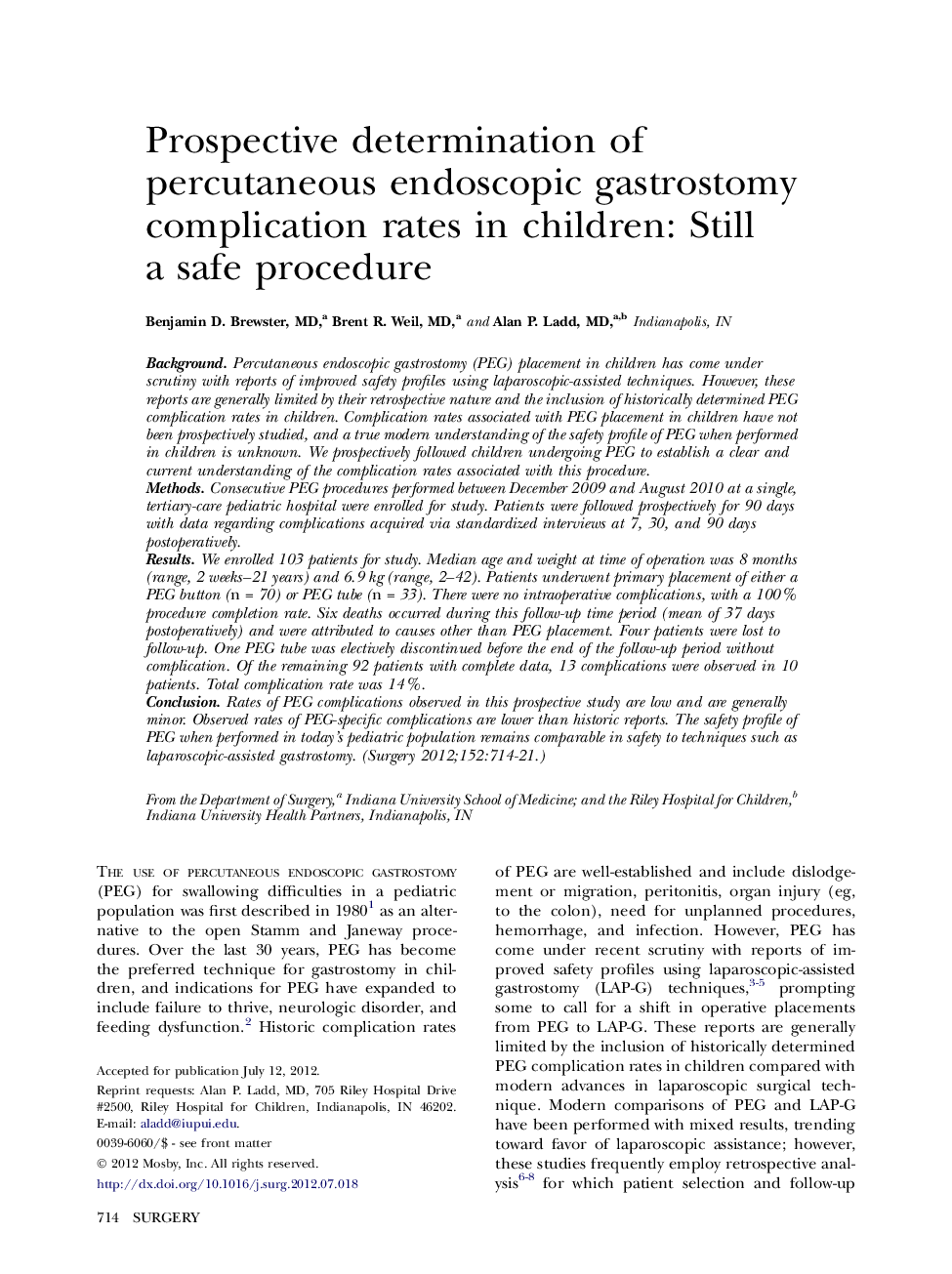| Article ID | Journal | Published Year | Pages | File Type |
|---|---|---|---|---|
| 4307839 | Surgery | 2012 | 8 Pages |
BackgroundPercutaneous endoscopic gastrostomy (PEG) placement in children has come under scrutiny with reports of improved safety profiles using laparoscopic-assisted techniques. However, these reports are generally limited by their retrospective nature and the inclusion of historically determined PEG complication rates in children. Complication rates associated with PEG placement in children have not been prospectively studied, and a true modern understanding of the safety profile of PEG when performed in children is unknown. We prospectively followed children undergoing PEG to establish a clear and current understanding of the complication rates associated with this procedure.MethodsConsecutive PEG procedures performed between December 2009 and August 2010 at a single, tertiary-care pediatric hospital were enrolled for study. Patients were followed prospectively for 90 days with data regarding complications acquired via standardized interviews at 7, 30, and 90 days postoperatively.ResultsWe enrolled 103 patients for study. Median age and weight at time of operation was 8 months (range, 2 weeks–21 years) and 6.9 kg (range, 2–42). Patients underwent primary placement of either a PEG button (n = 70) or PEG tube (n = 33). There were no intraoperative complications, with a 100% procedure completion rate. Six deaths occurred during this follow-up time period (mean of 37 days postoperatively) and were attributed to causes other than PEG placement. Four patients were lost to follow-up. One PEG tube was electively discontinued before the end of the follow-up period without complication. Of the remaining 92 patients with complete data, 13 complications were observed in 10 patients. Total complication rate was 14%.ConclusionRates of PEG complications observed in this prospective study are low and are generally minor. Observed rates of PEG-specific complications are lower than historic reports. The safety profile of PEG when performed in today's pediatric population remains comparable in safety to techniques such as laparoscopic-assisted gastrostomy.
